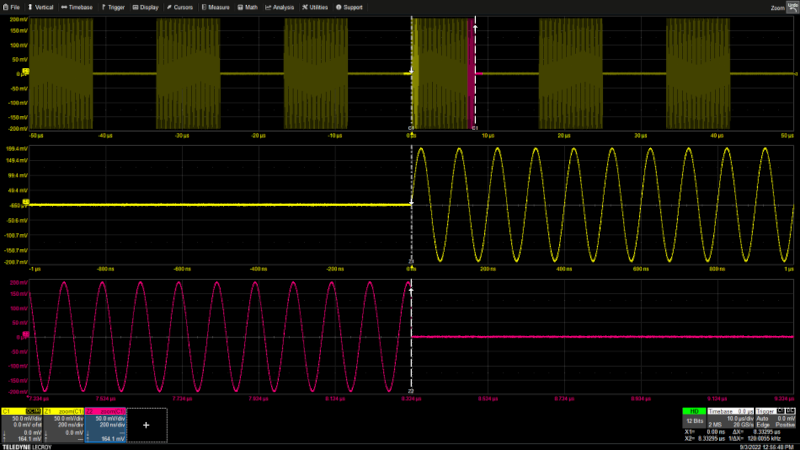There was a time when few hobbyists had an oscilloscope and the ones you did see were old military or industrial surplus that were past their prime. Today you can buy a fancy scope for about what those used scopes cost that would have once been the envy of every giant research lab. However, this new breed of instrument is typically digital and while they look like an old analog scope, the way they work leads to some odd gotchas that [Arthur Pini] covers in a recent post.
Some of his tips are common sense, but easy to forget about. For example, if you stack your four input channels so each uses up a quarter of the screen, it makes sense, right? But [Arthur] points out that you are dropping two bits of dynamic range, which can really jack up a sensitive measurement.
He also has tips on how to improve noise on measurements and get the best data from cursors. Again, if you take the time to think about how everything works, it is pretty obvious: showing millions of samples on a screen with maybe 2,000 pixels means each pixel represents a lot of data.
Some of the features he mentions may not be on your scope, but it is still an interesting example of how what your eyes tell you isn’t always the truth. The post is a great reminder to think about how the scope is working when you make measurements.
Of course, if you really want to understand your scope, you should build it. If you aren’t too picky, you can just use your browser.
















I have 3 (one like new) Tektronix 422 scopes that I haven’t used in years! I believe it was one of the first with solid state components. Fun reminiscing…⁰
One gotcha not mentioned is that some cheap scopes, especially Rigol, compute the measurements from the downsampled screen data, not the full captured data. This causes e.g. RMS measurements to vary wildly depending on zoom scaling.
I believe even some older expensive scopes did something similar: if you had part of the signal off-screen (vertical amplification too high) it would clip the resulting displayed peak-to-peak measurement. I spend a lot of time writing test and measurement software, and some of the most challenging stuff is adaptive code for scope control, where you have to use a combination of prediction and intelligent feedback from the scope to set future scope capture parameters to get the best data possible: the smallest number of signal transitions on screen for a repeating signal, to get the highest frequency/pulse width accuracy, and, as noted in TFA, the highest vertical gain possible to get as many bits of data as you can without clipping, which itself also requires resetting the vertical position and often the trigger voltage.
I have a Tek 465, for which I paid $2k in 1978. Sadly, the last time I turned it on, it released some magic smoke. It was a good scope and I used it often, but haven’t powered it on for almost 20 years. I thought about fixing it, and still may, but it’s big, heavy and limited in its capabilities, compared to the current offerings from Keysight.
I replaced it with a $700 Siglent. Twice the bandwidth, four channels and memory. No, it’s not a Tek, and the measurements made with it do need to be treated with a certain amount of skepticism, but for looking at waveforms, debugging and such, it’s probably a step up from a multimeter.
IMHO a scope has an CRT, otherwise it’s no scope. Period.
@ Joshua +1.
I recently acquired a Tek 485 with new probes for $100. I carefully cleaned some of the contacts, ran a calibration routine that fixed a triggering issue, and now can’t find anything wrong with it. If I were a working pro who used scopes for my profession I would be using something else but since this has been in use for 40 years, barring tragedy (touch wood) it’ll be the last scope I buy for a long time :)